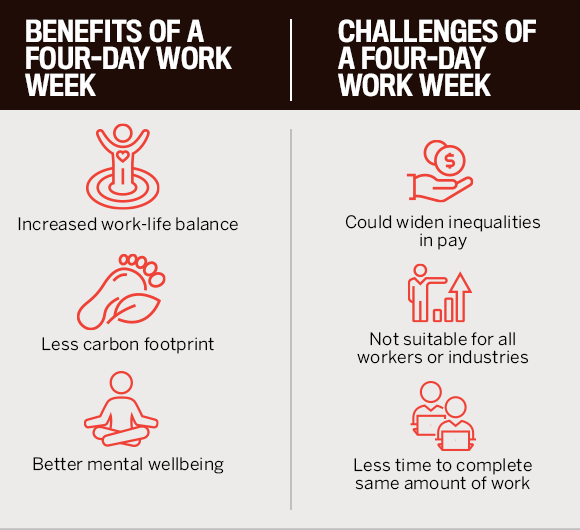
Which sectors will flourish, and which will flounder?

Ah, the four-day work week. What once sounded like a pipedream has now come into fruition for many organizations - the opportunity to give employees three days rest for four days labour.
Just five years ago, the idea of the four-day work week seemed more like an eccentric experiment, designed to test productivity and measure potential loss. However, since the great upheaval of the pandemic, the sudden shift to remote working models and the emergence of the global talent market, it seems as if anything goes. After all, ideas that CEOs once baulked at are now intrinsic company strategies.
Read more: McDonald's director of people strategy on thriving in a pandemic
This is the time for HR leaders to trial new ideas, test new ways of working, and understand what really works for their people and their teams.
So, how can you go about trialling a four-day work week in your company? Well, for starters, you’ll need to do some internal analysis. While the idea of a four-day week sounds simple enough, the metrics behind it are quite nuanced. The levels of success will depend very much on what industry you’re in. For example, in sectors such as teaching or medicine it would be much more difficult to adapt the schedule based on the employee’s output. Again, in manual jobs – ones in which employees are making an actual product - this would be trickier (though not impossible) to organize.
In creative sectors such as design and media, the four-day work week would be easier to implement. Similarly, PR, sales, and data-based industries would have a better chance of rolling out this strategy.
To assess if this model could work for you, begin by looking at overall output, before segmenting that into departmental duties. Have your heads of department draw up a weekly plan for their teams, looking at what work can be shared, condensed, or eradicated. From there, it’s easier to draw up a battle strategy of where to go next.

The four-day work week has found an unlikely ally in the WFH revolution. With employees already working remotely, it’s a lot easier for HR to manage flexible schedules on a rotational basis.
“An initial review requires the structure of this offering,” added Dr Melanie Peacock, associate professor of HR at Mount Royal. “Will all employees work the same four days, or will there be staggered days off, or overlapping or core hours on-site during the workdays? What jobs are suitable for this type of arrangement, and which may not be? This requires that a thorough and transparent job analysis for all company roles be conducted.”
When you’re trialling any new working model, it’s essential that you continually measure its progress. Encourage managers to track the productivity of their teams – measure factors such as deadline submissions, sales figures, calls made etc – as well as employee experience issues such as morale, absenteeism, and mental health.
Remember, you may see an initial spike of productivity, much like we did at the start of the pandemic, but its important to keep tracking to see where the land lies once the model is fully implemented. The idea behind a four-day work week isn’t to cut employees pay by a fifth, but to condense all five days of work into the remaining four. For this, you also need to get employee backing so that they fully understand what’s expected of them in the new model. In order to really implement a four-day week it’s important that everyone embraces flexibility and innovation – and put aside any preconceived bias.
Would you consider trialling a four-day week? Tell us in the comments.
Read more: Tesla's head of HR resigns